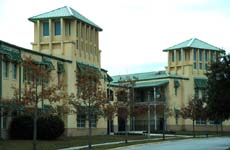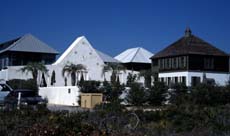New Urbanist norms for community

The Celebration school, which became a focus for community discussion and disagreements

Community swimming pool at Rosemary Beach, Florida
The most publicized difference in social grammar difference in New Urbanist developments is the normative expectation for "community" as an intentional product, with everyone working for its achievement. Community is fostered not just by physical design but also by explicit preplanned "software": organizations, civic events, and conscious attempts to create interaction. As one resident of Celebration told me, "We're the meetingest community." When this works, neighbors come together in formal and informal ways for social life and for political debate about community values and priorities, debate of the sort that Andrew Ross chronicles in the disputes over the Celebration School. Ross argues that besides physical design and community software there have to be shocks or issues that precipitate communal interaction and communal self-examination and self-construction. When there were problems with the school, when shoddy building practices were revealed, when the corporation changed its policies, the residents of Celebration came together.
Such modes of community can develop in standardly planned suburbs and urban neighborhoods as well. What makes New Urbanist developments different is that these goals are more explicitly avowed, so inhabitants arrive with that intention, and the area offers a physical layout that helps rather than hinders efforts to build intermediate scale institutions.